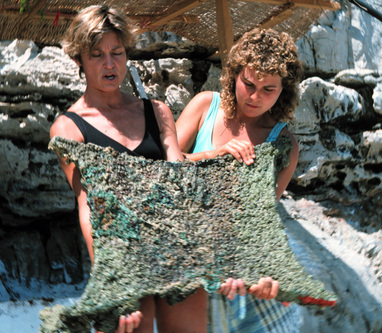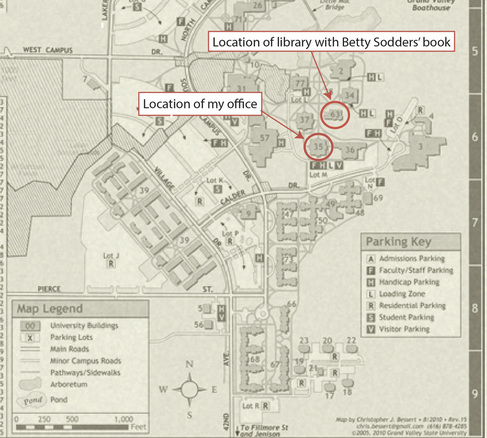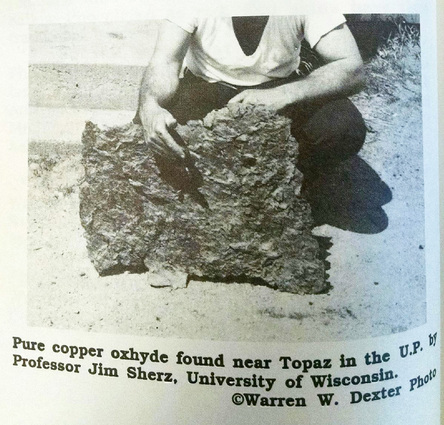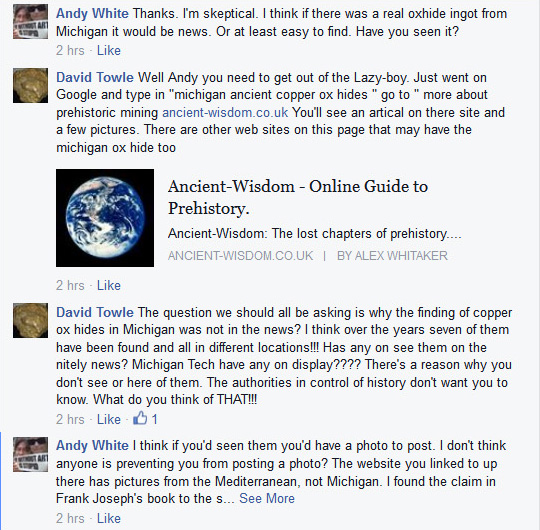 Copper oxhide ingot from the Bronze Age Uluburun shipwreck found off the coast of Turkey (source in text).
Copper oxhide ingot from the Bronze Age Uluburun shipwreck found off the coast of Turkey (source in text). What does this have to do with Lake Gogebic? Proponents of the idea that the ancient copper mines of Michigan were actually worked by miners from the Old World (rather than Native Americans) have latched on to various "artifacts" over the years as proof of trans-oceanic contact. I'm not even going to attempt to get into all that - none of the various inscribed tablets, petroglyphs, etc., has held up to scrutiny. What caught my attention this week was a claim that an actual oxhide ingot had been found in the New World. I became aware of this claim when I saw a post in a Facebook group by David Towle, one of the guests on this interview. Towle stated that multiple full-size (i.e., 60-70 pound) oxhide ingots had been found near Lake Gogebic, in the western Upper Peninsula.
“Closer to the focus of our investigations, a sixty-pound copper ox hide was discovered near Lake Gogebic, in Michigan’s Upper Peninsula.”
So that was something: I had found a written source. There is an endnote attached to the sentence, but, frustratingly, I couldn’t read it because the limited view available in Google Books didn’t allow me to see the last portion of the book. I asked around online and couldn’t find anyone who owned a copy. So it looked like my search would be on hold until I could get a copy of Joseph's book to read that endnote.
Dammit.
After more searching, however, mostly by just Googling phrases with various combinations of key words related to the ingot and its location, I found some online chatter that had paraphrased part of a (1993) article by Better Sodders that had appeared in Ancient American magazine (Volume 1, Number 2, pp. 28-31). This seemed promising, as it would take me back two years before Joseph's book and maybe get me to the source of the story or more information. I dutifully paid my $4.95 for a pdf of the issue so I could read the story (“Who Mined American Copper 5,000 Years Ago?”). In that article, Sodders writes:
“A wall-painting in the Egyptian Tomb of Rekmira depicts red-skinned men, possibly American Indians, carrying oxhydes on their shoulders to the tax collector. The copper ingots are exact duplicates of a specimen excavated near Lake Gogebic in Michigan’s Ontonagon County.”
Frustratingly, there was no source given for the story or any other information provided. So that seemed like another dead end. I found Betty Sodders online, however, and sent her an email asking about the alleged oxhide ingot from Lake Gogebic. She sent me a very nice reply the next morning and directed me to her (1991) book Michigan Prehistory Mysteries Two (the second volume of a two-volume set). She even told me what pages to look on and said that there were . . . wait for it . . . photos of the oxhide ingot. Thank you Betty Sodders.
Okay, now I was getting somewhere. I found Michigan Prehistory Mysteries on Amazon.com, but was disappointed to learn that the second volume, unlike the first, was not available electronically.
Dammit!
I looked around for other ways to get ahold of the book, but couldn’t find a way to download it anywhere without feeling like I was putting my computer at risk of being infected by something. Then, in a stroke of genius, I remembered that I actually work at a university that has a real library with real books. Lo and behold, Grand Valley’s library owns a copy of Michigan Prehistory Mysteries Two. Even better, it turned it was actually housed in a “library use only” collection less than 200 yards from my office.
So, it was really time to take David Towle's admonition to heart and get out of my La-Z-Boy and go the Seidman House library (disclosure: my desk chair is actually made by Steelcase, as is just about everything at Grand Valley). I made plans to go and look at the book that afternoon. Brian Fagan was doing an informal question-answer session with some of our students from 3:00-4:15 that afternoon, so I planned to go to that and then stop by the Seidman House library on the way back to my office. Fagan was great, and I hung around for a few minutes afterward to introduce myself and shake his hand. I got to the Seidman House at 4:28 and the door was locked: the library there closes at 4:30.
Dammit.
 Map showing the distance I had to cover to see a picture of the alleged oxhide ingot from Lake Gogebic. It was raining really hard, so I borrowed an umbrella from our Office Coordinator.
Map showing the distance I had to cover to see a picture of the alleged oxhide ingot from Lake Gogebic. It was raining really hard, so I borrowed an umbrella from our Office Coordinator. I had to fill out a form to see the book, but I did it, because science is important. When I finally got my hands on Michigan Prehistory Mysteries Two, I was not disappointed. I skimmed the chapter that Betty Sodders had pointed me to and photographed all the pages.

It is shown being held by Dr. James Scherz, who is identified as the finder in the caption. Here is what Sodders writes about it:
“This particular oxhyde Scherz is holding was photographed by Warren Dexter at Topaz near Lake Gogebic, east of Bergland and Matchwood in the western confines of the U.P.”
That’s not much more than I already knew, but at least there is another name: James Scherz is going to be the key to wrapping this story up. So far, I have been unable to identify a publication of his (he has written many having to do with New World-Old World contacts) that tells the story of this artifact. I have also been unable to find a current email address for him so that I can ask him about it directly. Doing a little bit of searching makes it apparent that he has been involved in Burrows Cave, the story of which is beyond the scope of anything I plan to write about.
So what is the rest of the story behind this artifact? Where did it come from? In what context was it found? Where is it now? I'm pretty sure James Scherz could answer all of these questions. If anyone knows how he can be reached or can make him aware of this post, I would appreciate it. Then maybe we'll have a conclusion to the exciting story of the oxhide ingot from Lake Gogebic.
I emailed Bruce H. Johanson, President Ontonagon County Historical Society, and he informed me the alleged oxhide ingot is not in their collections.
Now you can go back to whatever else you were doing.




 RSS Feed
RSS Feed
